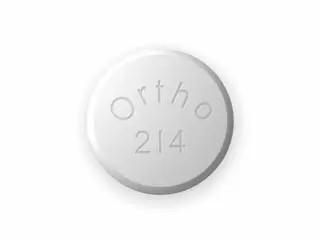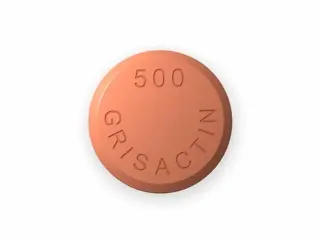Antifungal
Effective antifungal treatments to combat infections quickly and restore skin and nail health. Shop trusted, fast-acting products for lasting relief and comfort.
Antifungal medications are essential in treating fungal infections. These infections can affect the skin, nails, mouth, and internal organs. Choosing the right antifungal depends on the type and severity of the infection. Below is a review of popular antifungal pills available in the category.
Diflucan (Fluconazole) is a widely used antifungal pill. It works by stopping the growth of fungi, especially Candida species. Diflucan is often prescribed for yeast infections, including vaginal yeast infections and oral thrush. It is easy to take and usually well-tolerated. Common side effects include headache and stomach upset. Diflucan has the advantage of once-daily dosing and good tissue penetration, making it effective for systemic infections.
Grifulvin (Griseofulvin) is an older antifungal drug mainly used to treat fungal infections of the skin, hair, and nails. It works by inhibiting fungal cell division. Grifulvin requires taking the medication for several weeks to months, depending on the infection's location. It is effective but has more side effects, such as headache, dizziness, and gastrointestinal issues. Because it interacts with many drugs, medical supervision is necessary during treatment. Grifulvin is not suitable for pregnant women.
Grifulvin V is a variation of Grifulvin with improved absorption. It is similar in use and action to Grifulvin but offers better effectiveness due to higher bioavailability. Grifulvin V is chosen when prolonged treatment is necessary, especially for stubborn fungal infections. Patients need to take it with fatty meals to improve absorption. Side effects mirror those of Grifulvin and require monitoring.
Grisactin is an antifungal used primarily for skin infections like athlete’s foot and ringworm. It contains griseofulvin as the active ingredient. The treatment duration can be long, depending on the infection's extent and location. Grisactin is effective but less commonly prescribed nowadays due to newer antifungals with fewer side effects. It remains an option when other medications cannot be used.
Lamisil (Terbinafine) is a popular antifungal pill. It treats conditions such as ringworm, athlete’s foot, jock itch, and nail fungus. Lamisil works by inhibiting fungal cell membrane synthesis. It is known for its high cure rates and shorter treatment durations compared to older drugs. Side effects are usually mild but may include gastrointestinal upset and rash. Liver function monitoring may be recommended during long courses. Lamisil is available in oral and topical forms, allowing flexible treatment options.
Lotrisone is a combination antifungal treatment that includes betamethasone, a corticosteroid, along with clotrimazole. While Lotrisone is more commonly found in topical formulations, the combination addresses inflammation and fungal infection simultaneously. Using corticosteroids in fungal infections requires caution to avoid worsening the infection. Oral forms are less common, but the combination approach is useful in cases with significant inflammation.
Nizoral (Ketoconazole) is a broad-spectrum antifungal pill. It treats various fungal infections, including serious systemic infections. Nizoral disrupts fungal cell membranes causing fungal death. It has good efficacy against skin and systemic yeasts. Ketoconazole tablets require careful use because of possible liver toxicity. Patients must be monitored for liver problems during treatment. Nizoral is effective but usually reserved for cases where other antifungals are not suitable.
Sporanox (Itraconazole) is a potent antifungal medication used for a variety of fungal infections. It works by inhibiting ergosterol synthesis, essential for fungal cell walls. Sporanox is prescribed for nail infections, systemic fungal infections, and some difficult-to-treat skin infections. Compared to other antifungals, Sporanox has a broad spectrum and good absorption, especially when taken with food. Common side effects include nausea and headache. Sporanox requires close monitoring as it interacts with many other medications.
When considering antifungal pills, it's important to recognize that fungal infections vary widely. Some are superficial and easily treated with topical agents, while others require oral treatment for complete cure. Oral antifungals provide systemic coverage and help clear infections that extend deep into tissues. Treatment length varies; nail infections may need months of therapy, whereas skin infections may clear faster.
Patient factors such as age, other health conditions, pregnancy, and medications must be considered when selecting an antifungal. Liver function tests may be needed with medications like Nizoral, Lamisil, or Sporanox, due to potential toxicity. Griseofulvin products require adherence to longer treatment periods and dietary considerations.
Among these options, Diflucan stands out for its convenience and tolerability in yeast infections. Lamisil has become popular for nail and skin infections due to faster results and lower side effects compared to Griseofulvin. Sporanox offers a strong choice for complex infections, requiring medical oversight for safe use. Nizoral remains useful in specific cases but less favored due to safety concerns.
In summary, antifungal pills like Diflucan, Lamisil, Grifulvin, Nizoral, and Sporanox offer effective treatments for a variety of fungal infections. Each medication has unique properties, benefits, and potential risks. Proper diagnosis and medical advice are important to ensure the right drug and treatment length. Using these medications appropriately leads to successful fungal infection management and reduced risk of recurrence.





